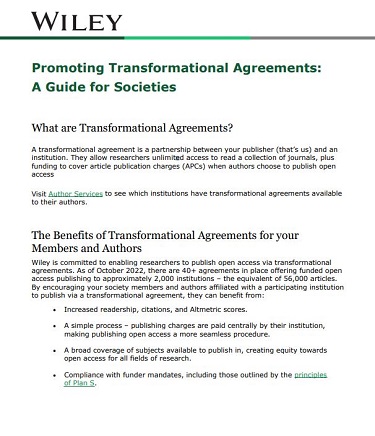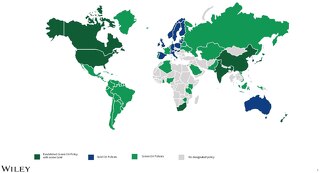is-transparency-a-priority-for-your-journal
September 27, 2018
Funding bodies, researchers, institutions, and publishers are all focusing on the call for more transparency within the research publication process. Transparency can make research more reliable, and potentially more reproducible. Researchers are being asked for more openness by their employers and funders, which means they need it more than ever from the journals they publish in.
From peer review to open data, transparency comes in different forms. How does transparency fit into your journal strategy? Is it a top priority, or something only thought of during a crisis? The discussion around transparency is always evolving, so whether or not you have a transparency policy for your journal, it is always something to return to time and again. By reviewing the current transparency of your journal and creating a plan for progress, you can improve research integrity and research impact.
Read through our five tips to get started.
1. Evaluate where your journal currently stands
To build a transparency strategy, you must first examine current journal procedures. It can be challenging to take a critical look at processes and question them, but without this step, prioritizing changes will be a challenge.
Some good questions to ask yourself are:
- Do we explain how editors make decisions about what research they choose to publish?
- What are the interests, and conflicts of interest, of the editor and editorial board?
- Do we know what steps to take if we suspect misconduct?
By identifying gaps in your publishing process you’ll be better positioned to develop a transparent publishing strategy for the future.
2. Reflect on the peer review process
Peer review is consistently highlighted as one of the key areas in need of added transparency. For some, this may mean introducing a transparent peer review process, and for others it may be offering training for peer reviewers. Reviewing your journal’s current peer review process can help you identify areas for improvement. Offer training and guidelines for your reviewers, so that they are aware of their personal biases and their potential effect on the peer review process.
3. Shine a light on journal processes
After a paper is submitted, what occurs next is often hidden behind closed doors. Operational transparency refers to how journals, publishers, and others open up their internal processes. Publicly share the journal workflow and decision-making that occurs throughout the article publication process. This will further develop trust within your community and authors will know what to expect throughout the submission process.
4. Help your authors be more transparent
Authors are responsible for maintaining transparency throughout the scientific and publishing processes, but things can be lost or forgotten along the way. Ensure that your author guidelines are clear and acknowledge any notable transparency-related policies. Providing an author checklist can also be useful.
5. Have a plan if things go wrong
Mistakes happen and errors can be missed. Knowing how to take action if something goes wrong will help to resolve the issue quickly. Having policies for challenges such as conflict of interest or editorial misconduct will prepare you for the worst and set expectations for authors. COPE, the Committee on Publication Ethics, has created a series of flowcharts, designed to help follow their Core Practices and implement advice when faced with cases of suspected misconduct.
How you are improving transparency in publishing? Tell us in the comments below.










